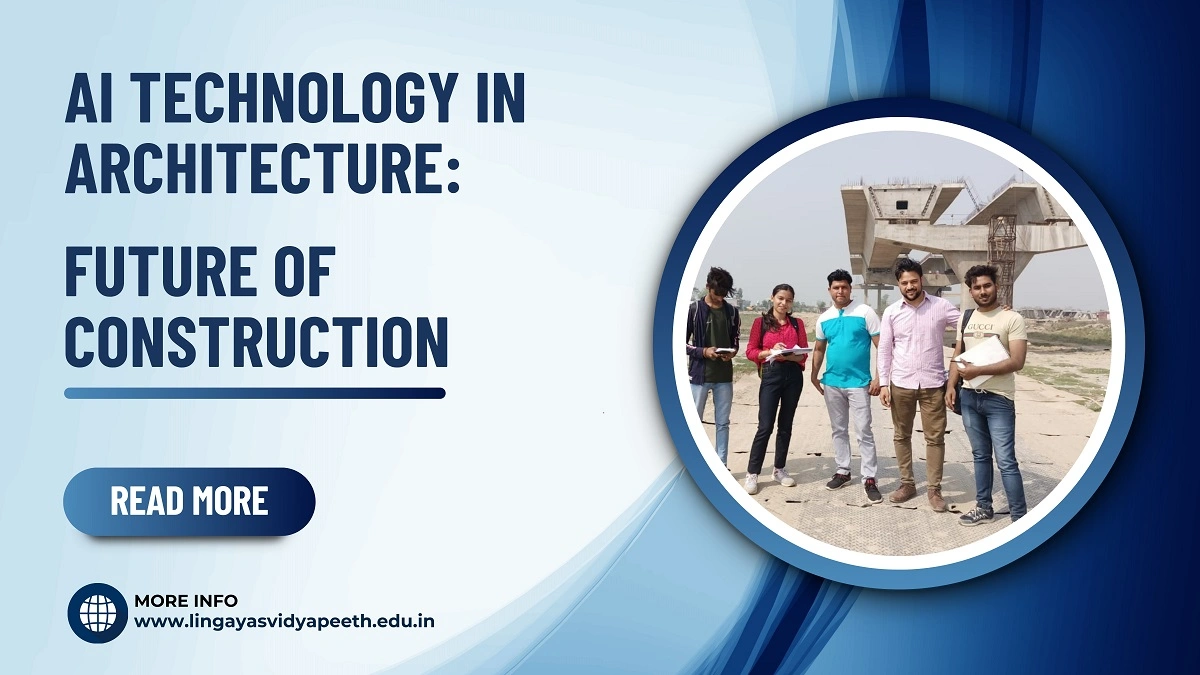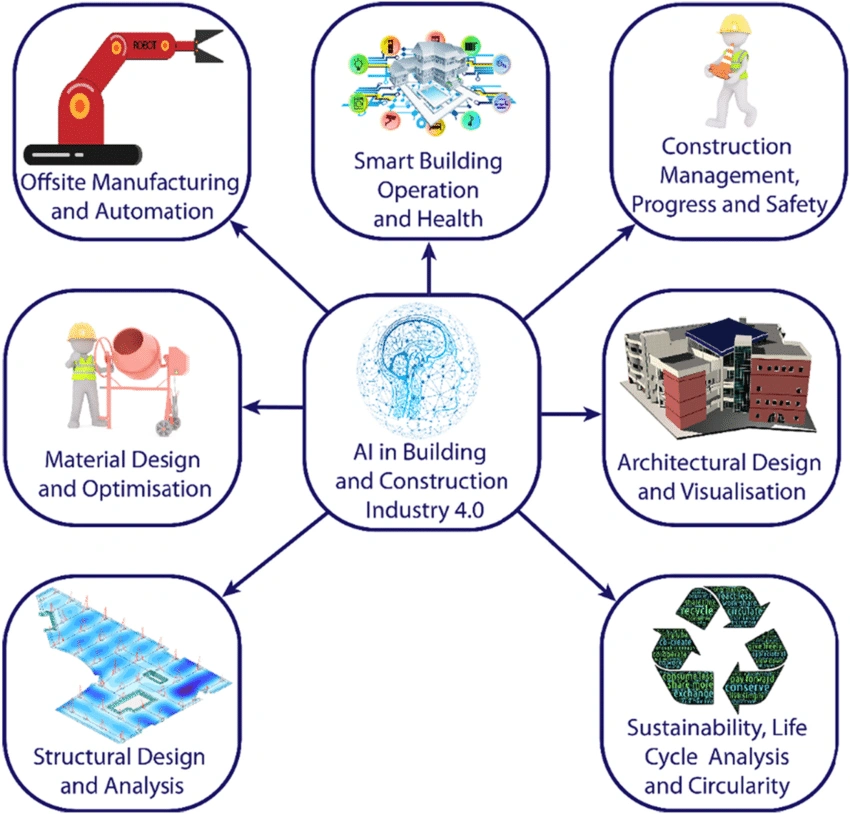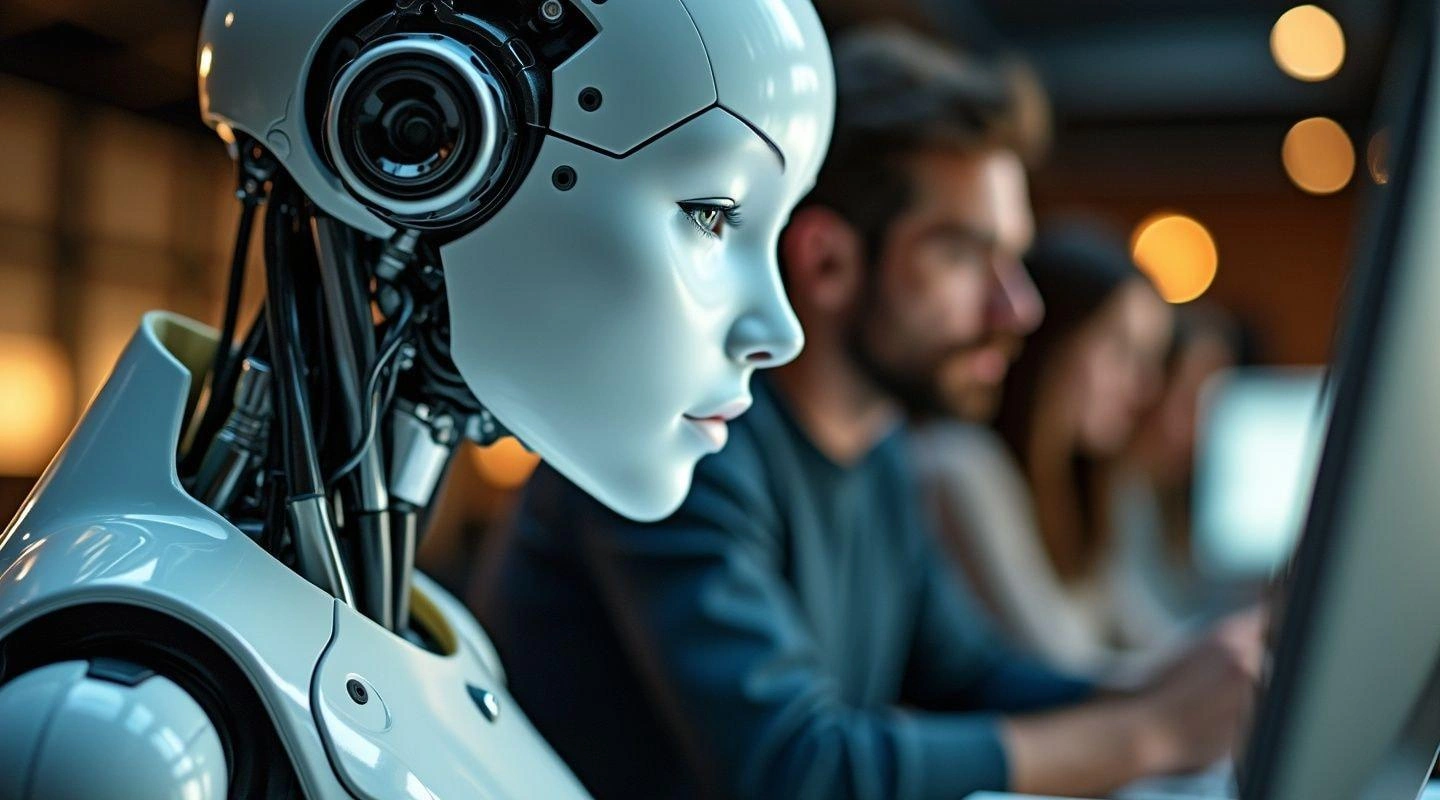Home » AI Technology in Architecture: Future of Construction

Architecture is not an exception to the way artificial intelligence (AI) is quickly becoming one of the most transformative technologies in construction and design industries. Historically, the foundations of architecture have been creativity, cultural context, innovative materials, and structural logic. AI is changing how architects plan, design, and construct buildings and urban spaces, even though these elements remain essential. With AI-powered tools, architects now have faster, smarter, and more efficient ways of working in areas like conceptual design, project management, sustainable construction, and smart building solutions.
This blog explores the opportunities, challenges, and growing impact of artificial intelligence in modern architecture.

Technological innovations have always shaped architecture. Computer-aided design (CAD) transformed architectural drafting in the late 20th century, while Building Information Modelling (BIM) revolutionized collaboration in the 21st century. The next major leap is artificial intelligence (AI), which gives architects tools to process vast amounts of data, predict outcomes, and optimize design workflows.
At its core, AI in architecture relies on computer vision, generative design software, machine learning algorithms, and natural language processing to solve design challenges. For example, AI can generate multiple design solutions based on site conditions, climate factors, and user needs, allowing architects to explore creative possibilities that were once unimaginable.
Generative design is one of the most innovative uses of AI in architecture. With AI-driven design software like Spacemaker or Autodesk Generative Design, architects can generate hundreds of building options by setting parameters such as budget, sustainability goals, materials, and spatial requirements.
Rather than replacing architects, generative design complements their work. While AI handles the complex calculations and simulations, architects can focus on aesthetics, cultural identity, and human experience in design.
AI enables data-driven architecture by predicting and simulating building performance. Algorithms can assess energy efficiency, natural lighting, ventilation, and thermal comfort in different scenarios.
Instead of trial and error, architects can now integrate sustainability and energy efficiency into projects from the start. For instance, AI-powered environmental tools can design buildings that maximize natural light, optimize airflow for passive cooling, and reduce energy consumption. These features help meet green building certifications and global climate goals.
AI is also transforming construction project management. Predictive analytics can forecast delays, cost overruns, and safety risks by analyzing past project data. AI-powered drones equipped with computer vision monitor construction sites, detecting errors or deviations from blueprints in real time.
Additionally, AI-driven robotics automate repetitive tasks such as bricklaying, material handling, and 3D printing structures, making construction faster, safer, and more cost-efficient.
Artificial intelligence plays a vital role in shaping future smart cities. By analyzing traffic patterns, population growth, energy usage, and environmental impact, AI helps urban planners make data-driven decisions.
For example, AI can suggest the best locations for green spaces, public transport hubs, or renewable energy infrastructure. This enables architects and planners to design cities that balance sustainability, livability, and urban growth.

While AI brings major advantages, it also introduces challenges:

AI is not replacing architects—it is enhancing their capabilities. Architects will shift from manual drafting to curating AI-generated outputs, refining cultural and human elements, and ensuring user-centered design.
Emerging trends include AI integration with augmented reality (AR) and virtual reality (VR), allowing clients to virtually explore AI-designed spaces before construction begins.
In the long run, AI will play a key role in net-zero energy buildings, carbon reduction, modular housing, and 3D-printed construction, especially in addressing challenges like affordable housing and urban density.
AI technology is reshaping the architecture and construction industry by combining creativity with data-driven efficiency. From generative design tools to smart city planning, AI empowers architects to build spaces that are sustainable, efficient, and human-centered.
However, successful adoption requires balancing AI’s computational power with human empathy, artistic vision, and cultural identity. The architects of the future will be those who collaborate with AI—using it as a powerful design partner while keeping the soul of architecture deeply human.
Also Read
Best Cyber security courses after 12th
Top Software engineering courses after 12th
Best AI courses after 12th
Top Technical courses after 12th
From
Ar. Vivek Painuli
Assistant Professor
School of Architecture
Lingaya’s Vidyapeeth
Best Architecture College in Faridabad
RECENT POSTS
CATEGORIES
TAGS
Agriculture Agriculture future AI Architecture artificial intelligence Bachelor of Commerce BA English BA Psychology BTech AIML BTech CSE BTech cybersecurity BTech Engineering Business management career Career-Specific Education career guide career option career scope Civil engineering commerce and management Computer Science Computer science engineering Data science degree education Engineering Engineering students English Literature english program Fashion Design Fashion design course Higher Education Journalism journalism and mass communication law Law career Machine Learning mathematics MBA MBA specialization Mechanical Engineering Pharmacy Psychology Research and Development students
Nachauli, Jasana Road, Faridabad, Haryana
Address: C-72, Second Floor, Shivalik, Near Malviya Nagar,
Above HDFC Bank, New Delhi 110017
Landline No. - 011-46570515 / 45138169 / 41755703
Mobile No. - +91-7303152412 / +91-7303152420 / +91-9311321952
Toll Free: 1800-120-4613
Mobile : 8447744303 | 8447744304 | 8447744306 | 8447744309
8700003974 | 8700003411 | 8700003749
Copyrights © 1998 - 2025 Lingaya's Vidyapeeth (Deemed To Be University). All rights reserved.
LV only conducts physical/online verification of any document related to examination on the following email id:
It is important to note that the following email IDs and domains are fraudulent and do not belong to our university.